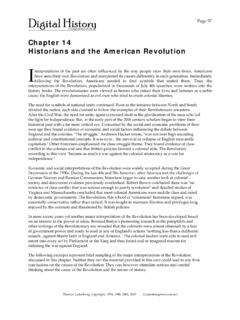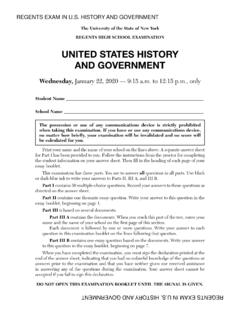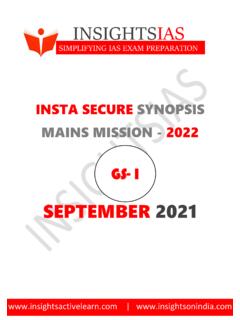Transcription of RULE BOOK - GMT Games
1 Twilight Struggle 2nd Edition 2007 GMT Games , LLCGMT Games , LLC Box 308, Hanford, CA 93232- U L E B O O Kby Jason Matthews & Ananda Gupta . Introduction .. 22. Components .. 23. Game Setup .. 34. Game Sequence .. 35. Card Play .. 46. Operations .. 67. Events .. 88. DEFCON Status and Military Operations .. 89. China .. 9T A B L E O F C O N T E N T S 0. Scoring and Victory .. 0 . Tournament Play .. 2. The Chinese Civil War Variant .. A Late War Scenario .. 2 Game Credits .. 3 Designer Optional rules .. 3 Extended Example of Play .. 4 Card Histories .. 2 Designer s Notes .. 3 Deluxe EditionTwilight Struggle 2nd Edition 2 2007 GMT Games , INTRODUCTION Now the trumpet summons us again not as a call to bear arms, though arms we need, not as a call to battle, though embattled we are but a call to bear the burden of a long twilight John F. Kennedy, Inaugural Speech, January 1961 In 945, unlikely allies slew the Nazi beast, while humanity s most devastating weapons forced the proud Japanese Empire to its knees in a storm of fire.
2 Where once there stood many great powers, now stood only two. The world had scant time to sigh relief before a new conflict threatened. Unlike the titanic conflicts of the preceding decades, this conflict would be waged primarily not by soldiers and tanks, but by spies and politicians, scientists and intellectuals, artists and Struggle is a two-player game simulating the forty-five-year dance of intrigue, prestige, and occasional flares of warfare between the Soviet Union and the United States. The entire world is the stage on which these two titans fight to make the world safe for their own ideologies and ways of life. The game begins amidst the ruins of Europe as the two new superpowers struggle over the wreckage of the Second World War, and ends in 989, when only the United States remained Struggle inherits its fundamental systems from the card-driven classics We the People and Hannibal: Rome vs. Carthage. It is a quick-playing, low-complexity game in that tradition.
3 Event cards cover a vast array of historical happenings, from the Arab-Israeli conflicts of 1948 and 1967, to Vietnam and the peace movement, to the Cuban Missile Crisis and other such incidents that brought the world to the brink of nuclear annihilation. Subsystems capture the prestige-laden Space Race as well as nuclear tensions, with the possibility of nuclear war ending the rules are organized into numbered sections, with some sections further subdivided into subsections (for example, 2. and ). In a number of places in the rules , you will see refer-ences made to rules sections and subsections that are related to the one you are , terms that have specialized meaning within these rules , such as Influence or Battleground , are consistently capi-talized to allude to their specialized context within the COMPONENTSA complete game of Twilight Struggle includes the following: One 22 by 34 Map Board Two sheets of markers One rules Booklet Two Player Aid Cards 0 Cards Two 6-sided THE GAME MAP From Stettin in the Baltic to Trieste in the Adriatic, an iron curtain has descended across the continent.
4 Winston The map is divided into six Regions: Europe, Asia, Central America, South America, Africa, and the Middle East. A region is a group of geopolitically connected nations, normally in close geographic proximity. Europe is divided into two sub-regions, Eastern Europe and Western Europe. Two historically neutral countries (Austria and Finland) are categorized as being in both Eastern and Western Europe. Asia also contains a sub-region, Southeast Asia. The country spaces that comprise a region share a map color. Sub-regions have shades of the same color. DESIGN NOTE: Although not exactly geographically correct, the Middle East includes Libya and Egypt for political purposes, while Canada and Turkey are included in the Europe Any event, rule, action, or card that refers to Europe or Asia includes the associated sub-regions. Each space on the map represents a country or bloc of countries (hereafter simply called a country). Each country has a Stability Number representing the country s overall stability, independence and Battleground States.
5 While most states have their names on white, Battleground countries operate the same way as normal spaces but have special rules for scoring (see 0. ) and coup attempts ( ). Their country name is highlighted in purple for easy StateStability NumberNon-Battleground StateTwilight Struggle 2nd Edition 3 2007 GMT Games , Many cards have an asterisk following their Event title. When these cards are played as Events, they are removed per-manently from the Cards that have their Event title underlined are displayed face-up on the side of the game board until they are cancelled (or the game ends).PLAY NOTE: Player s may also indicate the play of underlined events with the numbered card reminder markers. They may be placed on map in the Events in Effect Cards that are discarded (not permanently removed from the game) are placed in a face up pile adjacent to the draw MARKERSThe game includes various markers to assist There are two spaces on the map representing the geo-graphic locations of the United States and the Soviet Union.
6 They are out of play for Influence Markers, but are considered adjacent controlled countries for the purposes of events, and realignments ( ). Countries are connected to one another via the black, red and brown lines on the map. Brown lines represent connections within a region. Red dashed lines represent connections between countries in different regions. The black lines indicate connec-tions between countries and superpowers. A country is considered adjacent to all other countries to which it is NOTE: Being adjacent is not entirely a reflection of geography. Several countries that share physical boundaries do not have connections in the game. This is not a map error but is part of the mechanics of the game and the political situation of the Controlling Countries: Each country on the map is con-sidered Controlled by one of the players, or it is uncontrolled. A country is considered Controlled by a player if: The player has Influence points in the country greater than or equal to the country s Stability Number, and The player s Influence in the country exceeds his/her op-ponent s Influence in that country by at least the country s Stability : To Control Israel (Stability Number 4), a player must have at least 4 Influence points in Israel, and must have at least 4 more Influence points in Israel than his/her opponent There are 0 cards used in the game.
7 Each card contains an Operations Point value, an Event Title and an Event Descrip-tion. Some cards are labeled SCORING, which must be played sometime during the turn they are Each card has a symbol to indicate which superpower is associated with its Event, as follows: Cards with a Red star only are associated with the USSR Cards with a White star only are associated with the US Cards with a split Red/White star are not associated with either side. (See for the effect of playing cards whose Events are associ-ated with your opponent s superpower.) Cards may be played in one of two ways, as Events or SpaceRaceUSControlUSInfluenceUSSRC ontrolUSSRI nfluenceUS SpaceRace card playedUSSR SpaceRaceUSSR SpaceRace card playedTurnMarkerVPMarkerDEFCONR estrictionsReminderCardReminderCardRemin derBackDefconStatusActionRoundUS MilitaryOP markerUSSR MilitaryOP markerEventEarly, Mid or Late War indicatorCard NumberOperations Point valueAsterisk = Remove From Play if event is usedSample CardTwilight Struggle 2nd Edition 4 2007 GMT Games , GAME Shuffle the Early War cards and deal each player 8 cards.
8 In addition, place The China Card face up in front of the USSR player. The players are allowed to examine their cards prior to deploying their initial Influence The USSR player sets up first. The USSR places a total of 15 Influence markers in the following locations: in Syria, in Iraq, 3 in North Korea, 3 in East Germany, in Finland, and 6 anywhere in Eastern The US player sets up second, placing a total of 25 Influence markers in the following locations: 2 in Canada, in Iran, in Israel, in Japan, 4 in Australia, in the Philippines, in South Korea, in Panama, in South Africa, 5 in the United Kingdom, and 7 anywhere in Western Place the US and USSR Space Race markers to the left of the Space Race track. Each player places his Military OP marker on the zero space of their respective Military Operations Track. Place the Turn marker on the first space of the Turn Record Track. Place the Defcon marker on the 5 space of the DEFCON Track. Finally, place the VP marker on the Victory Points Track on the zero GAME Twilight Struggle has ten turns.
9 Each turn represents between three and five years, and will involve six or seven normal card plays by each player. At the beginning of the game, each player receives eight cards from the Early War deck. At the beginning of turn 4, the Mid War deck is shuffled into the draw pile and the players hand size increases to nine. At the beginning of turn 8, the Late War deck is shuffled into the draw The Phasing Player is the player whose Action Round is currently being When there are no cards remaining in the draw deck, reshuffle all discards to form a new draw deck. Note that cards played as Events with an asterisk (*) are removed from the game when they are played, and are not shuffled into the new draw Deal all cards remaining in the draw deck before reshuf-fling, except in turns 4 and 8 (see ). When moving from the Early War deck to Mid War, or from Mid War to Late War, do not add in the discards to the deck in-stead add the Mid War or Late War cards (as appropriate) to the existing deck and reshuffle.
10 The ignored discards remain in the discard pile for now, but will be reshuffled into the deck in the next A turn in Twilight Struggle has the following structure: A. Improve DEFCON Status B. Deal Cards C. Headline Phase D. Action Rounds E. Check Military Operations Status F. Reveal Held Card (Tournament only) G. Flip The China Card H. Advance Turn Marker I. Final Scoring (after Turn 0 only)A. Improve DEFCON Status: If the DEFCON level is lower than 5, add one to the DEFCON status (towards Peace).B. Deal Cards: Each player receives enough cards to bring their total hand size to 8 on turns -3. On turns 4- 0, players should receive enough cards to bring their total hand size to 9. The China Card is never included in this Headline Phase: Each player secretly selects a card from their hand. Once both players have made their choice, they reveal their cards to each other simultaneously. These cards are called Headline cards and their Events take place in this phase (and if the event title has an asterisk, are removed from the game normally).

















